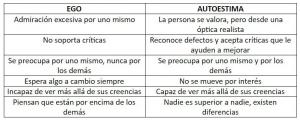The Flowtime Technique: what it is and how it works when applied to work
The Flowtime technique is a method of performing tasks that uses work intervals and rest periods as a reward to maximize the productivity of subjects.
The innovation of this technique is that it allows greater adaptation to the characteristics of the subject, type of task, as well as different variables that can influence its execution and state of concentration. In this way, this greater flexibility will work better with tasks that require greater creativity, greater time of concentration or that are of greater interest to the subject.
In order to apply this work strategy well, we must record the homework period, the breaks we take or the distractions that we have, so that with this greater control we can also know which plan benefits each person the most, which one is better adapts to his lifestyle, to his personality and we can thus take advantage of the period of “flow” of maximum concentration and production of the subject.
In this article let's see what the Flowtime technique is, which will allow you to be more productive and make better use of your work time, pointing out how you should apply it, as well as the main differences that it shows with another well-known method, the technique Pomodoro.
- Related article: "How to be more productive? 12 tips to perform better "
What is the Flowtime Technique
The Flowtime technique consists of a study or work method to be as productive as possible. In this way, we set a working time and a rest period always adapted to the lifestyle, personality and type of work or study carried out by the individual.
Thus, to proceed with the performance of this technique we must choose a specific task that we want to perform, record the start time and start working, stop and take a break when we notice that it is necessary and write down the time, set the rest time we will take and repeat the cycle until we are able to finish the task established.
This method, as already mentioned, will take into account the different individual variables of the subject and of the task that needs to be done, being more adaptable also regarding schedules, work time and breaks. The main objective will be to know which procedure or method works best for each subject in order to be the most productive as possible, without cutting or limiting your work and giving you the time you need both to get the job done and to to rest.
If we look at the terms that make up the name of the technique it also gives us more information about its consistency. It is made up of the English word "time" which means time, since this method requires keeping track and recording of homework and work time. rest and the word “flow”, this concept is defined as a state in which the subject is totally focused on the task, has a sense of control over her and loses temporal orientation, time passes faster and her self-awareness is diminished, since she is 100% focused on the work she is doing. making.
Understanding the concept of "flow" it will be very important to take advantage of this state of maximum concentration and productivity. and not cut or interrupt it as we may not be able to retrieve it again after taking a break.
- You may be interested in: "Psychology of work and organizations: a profession with a future"
How to apply it to work?
Taking into account the description made of the technique, the way of applying it will be quite flexible and adaptable to the needs of each individual. Thus, first we will select which task we want to execute (it is essential to have clear objectives). To start introducing the method, it may help you first to set yourself simpler tasks., for when you have more command of it, work with more complex and time-consuming tasks.
Once the task is set, we will start the work period by noting the start time. It will be essential that we keep a record and write down all the pauses or breaks that we do and the time of work carried out. This organization of time will depend on each one, how they feel, their state of fatigue and concentration, so there will not be a set schedule nor any timer that marks our breaks, but the indicator will be our concentration and our ability to continue working, it is not useful or productive to continue with the task if we feel tired and our attention is not focused on it, it will be better to stop and then continue with more energy and desire.
Thus, it will not be necessary to set a rigid schedule, or follow a work time established by others, but it will depend on yourself. The proposed interval is very flexible and ranges from 10 to 90 minutes, depending on the characteristics of each subject and the type of task carried out. We can also continue working even if the time exceeds the 90 minute interval, setting an alarm after 15 minutes.

- Related article: "Time management: 13 tips to take advantage of the hours of the day"
The breaks
In reference to rest, this will be proportional to the time worked, assuming 10 to 50% of this, and also taking into account what state you are in and if you feel ready to undertake the task again with your concentration restored and with all your abilities. In case you notice that you can no longer perform at all and that you are not able to be productive, it is better to leave the task and rest for a long period of time.
In the same way, we will have to take into account that there are different variables that may affect: the type of task (it is not the same to make a scheme than read a topic), if we have all day to do homework or we have to do other activities, or if we are better or worse at the job we are doing making.
- You may be interested in: "Parkinson's Law: Why We Take Longer The Longer We Have"
Taking annotations to better organize yourself while working
When we record the time of homework and rest it is recommended to also write down the interruptions that we have had, either by other people, by a call, by a message or by stimuli from our environment that have been able to distract our attention.
For example, you can work for about 25 minutes and proceed to take a 5-minute break; perform homework for 25 to 50 minutes and rest for 8 minutes; Work 50 to 90 minutes for a 10-minute break, or if you can stay focused on the task for 90 minutes, take a 15-minute break.
- Related article: "8 keys to stay motivated and achieve your goals"
Differences between the Flowtime Technique and the Pomodoro
The Pomodoro technique is also a method used to study and work, controlling the time we invest in the task and the time we are resting. It has some similar features with the Flowtime method, as the concretion and setting of an objective in which we will focus our work; In addition, it does not multitask, it proposes an organization of time and breaks are allowed.
But unlike the Flowtime technique, the Pomodoro is much stiffer, marking time very more concrete and not adapting so much to the characteristics or personality of each subject or to the type of job.
The period in the Pomodoro method consists of working for 25 minutes and resting for 5 minutes; in this way, when you have completed 4 blocks in a row, you can rest for 15 to 20 minutes. But this time or interval of work does not work for all tasks or for all individuals; It may be that we are concentrated and the alarm sounds distracting us and cutting off our work causing us to lose our rhythm or In tasks of greater creativity where a longer period is needed to start being productive, the 25 minutes remain. short.
The Pomodoro technique is not a bad work strategy, although it will be more focused on more repetitive taskss where it is necessary that we be concentrated or tasks that we do not like, since having short intervals and the rest time as an established reward, can motivate us and help us to better maintain our concentration. But when more flexibility is necessary or more creativity is required, it will be more advisable use the Flowtime technique if we want to be more productive and allow time for the state of flow.
On the other hand, the Flowtime method not only allows us to adapt the working time to our capacities, but it will also make it easier for the intervals to be different. We know that our concentration is not the same during the morning as it is at night, and that there are individuals who work better first thing in the day or others who are more nocturnal and work better at longer hours late. Therefore, the Flowtime strategy It will allow you to do longer periods and shorter ones with more or less extensive rest intervals depending on the time of day or the state of the subject..
Thus, we see how the Pomodoro method raises an external control, that is, there is a timer and a preset time that will mark when we must stop and when to return to work; On the other hand, the Flowtime technique presents an internal control, depending more on the physiological or cognitive state of the subject, he himself will be the one who decides when to stop, when his mind can no longer.

